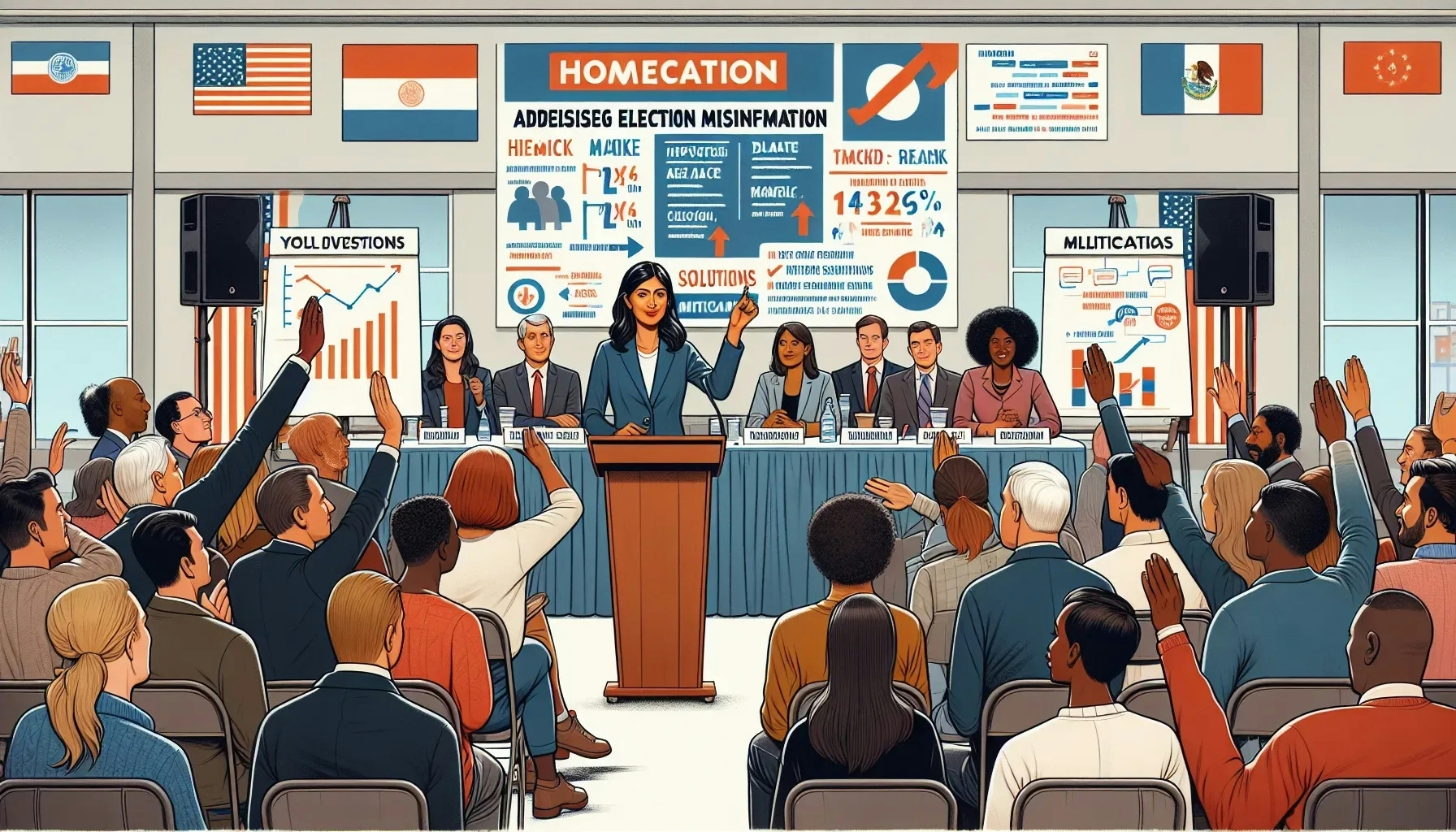In the digital age, misinformation can spread like wildfire, especially during election seasons. This blog post aims to equip readers with the knowledge and tools to detect and combat election misinformation. We'll delve into the various forms of misinformation, how to identify them, and strategies to counteract their influence.
Understanding Election Misinformation
Election misinformation refers to incorrect or misleading information about the electoral process, candidates, or related issues. It can take many forms, from false news reports to manipulated images or videos. Misinformation can be spread intentionally or unintentionally, but its impact on public opinion and voter behavior can be significant.
The first step in combating election misinformation is understanding its sources. These can range from foreign entities seeking to influence election outcomes to domestic groups or individuals with specific political agendas. Social media platforms, due to their wide reach and rapid information dissemination, often serve as the primary conduits for such misinformation.
Recognizing the potential harm of election misinformation is crucial. It can undermine public trust in the electoral process, skew perceptions of candidates, and even incite violence. By understanding the nature and implications of election misinformation, we can better prepare ourselves to counteract it.
Identifying Election Misinformation
Detecting election misinformation requires a keen eye and critical thinking skills. It often involves fact-checking, source verification, and analysis of the information's context.
Fact-checking is a fundamental tool in identifying misinformation. Numerous reputable fact-checking organizations, such as PolitiFact and FactCheck.org, provide resources to verify the accuracy of political claims. These organizations employ rigorous methodologies to ensure their findings are unbiased and reliable.
Source verification is another crucial step. It involves assessing the credibility of the information's source. Reliable sources typically have a history of accuracy, a reputation for integrity, and a clear and transparent agenda.
Analyzing the context of the information can also provide clues to its veracity. Misinformation often lacks context or presents information in a way that distorts its meaning. By considering the broader context, we can better assess the information's truthfulness.
Strategies to Combat Election Misinformation
Once we've identified election misinformation, the next step is to combat it. This can involve a range of strategies, from reporting the misinformation to educating others about its presence.
Reporting misinformation to the platform where it was found is a straightforward but effective strategy. Most social media platforms have policies against misinformation and provide mechanisms for users to report it.
Educating others about the presence of misinformation is another powerful tool. By sharing our knowledge and resources, we can help others become more discerning consumers of information. This can involve sharing fact-checking resources, discussing how to verify sources, or simply raising awareness about the prevalence of election misinformation.
The Role of Technology in Detecting and Combating Misinformation
Technology plays a pivotal role in both the spread and detection of election misinformation. Artificial intelligence (AI) and machine learning technologies, for instance, are increasingly being used to identify and combat misinformation.
AI can analyze vast amounts of data quickly, identifying patterns and anomalies that may indicate misinformation. Machine learning algorithms can be trained to recognize the characteristics of misinformation, making them increasingly effective over time.
However, the use of technology in combating misinformation is not without its challenges. Misinformation often evolves in response to detection efforts, and the line between legitimate political discourse and misinformation can be difficult to define. Despite these challenges, technology remains a crucial tool in the fight against election misinformation.
The Role of Government and Policy in Addressing Election Misinformation
Governments and policy-makers also have a role to play in addressing election misinformation. This can involve implementing regulations, promoting transparency, and supporting education initiatives.
Regulations can help hold those who spread misinformation accountable. This can involve penalties for spreading false information or requirements for social media platforms to monitor and remove misinformation.
Promoting transparency in the digital information space can also help combat misinformation. This can involve requirements for political advertisements to disclose their funding sources, or for social media platforms to provide more information about the algorithms that determine what content users see.
Education initiatives can help equip citizens with the skills to detect and combat misinformation. This can involve incorporating media literacy into school curriculums, or providing resources for adults to improve their digital literacy skills.
The Role of Individuals in Combating Election Misinformation
Ultimately, the responsibility for combating election misinformation lies with each of us. By staying informed, thinking critically, and sharing our knowledge with others, we can all contribute to the fight against misinformation.
Staying informed involves actively seeking out reliable sources of information and staying abreast of current events. It also involves understanding the tactics used to spread misinformation and the tools available to combat it.
Thinking critically involves questioning the information we consume, verifying its source, and considering its context. It also involves being aware of our own biases and how they can influence our interpretation of information.
Sharing our knowledge with others can help spread awareness of election misinformation and equip others with the tools to combat it. This can involve discussing these issues with friends and family, sharing resources on social media, or even volunteering with organizations that combat misinformation.
Unmasking Misinformation: Our Collective Responsibility
In conclusion, detecting and combating election misinformation is a task that requires collective effort. From understanding its nature, identifying its presence, to employing strategies to counteract it, each step is crucial. With the aid of technology, supportive government policies, and individual vigilance, we can ensure the integrity of our electoral process. Remember, every piece of information matters, and so does our role in safeguarding the truth.
